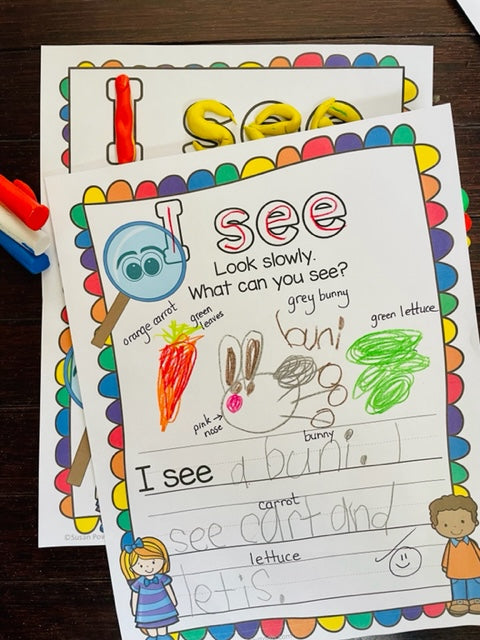PYP TEACHING TOOLS
Early Years SEE-THINK-WONDER Playdough Mats for Research Skills
Early Years SEE-THINK-WONDER Playdough Mats for Research Skills
Couldn't load pickup availability
Developing research skills in your early years IB PYP classroom with these play dough mats to support the thinking routine of SEE-THINK-WONDER. With multiple thinking skills being used within each part of this thinking strategy, we can break it down to further develop the routine with the youngest learners.
Fully differentiated to support and guide thinking, you will find simple blank templates for the children to use with the simplest sentence stems all the way up to mats for emerging readers and writers. Perfect for Pre-K up to Grade 1.
• Use with play dough to enable the children to make their thinking visible through creating playdough modelling of their observations, thoughts and questions.
•Create as dry erase boards for drawing their thinking
•Printable copies to record and monitor progress throughout the programme of inquiry and add to portfolios.
Lots of choices and flexibility enabling greater student agency and supporting all learning styles. This early years pack includes the following:
•Playdough/dry erase mats for SEE-THINK-WONDER
• traceable thinking skills words
•Feelings/thoughts chart for children’s reference
•black & white outlines copies can be used as colouring/painting or for playdough/dry erase
•Differentiated SEE-THINK-WONDER activities
These playdough mats can be used in connection with ANY provocation for ANY inquiry and investigative play. (You can link to a list of great books for teaching the Learner Profile, right here.)
Simply print and laminate (or use a page protector) and you have a fun, hands-on visible thinking routine that can be used with many centres and activities.
You may also like:
Playdough Mats for the Learner Profile
Early Years ATL Skills Posters (matching this set)
Learner Profile Crowns for Early Years (also in French & Spanish)
Write & Draw Learner Profile Activity for Early Years
Early Years Year Long Reflection Journal
Be sure to follow along with my blog for more ideas and strategies for bringing the PYP to your early years students.
Enjoy!
Susan Powers
Share



